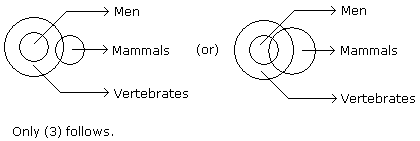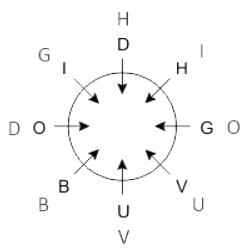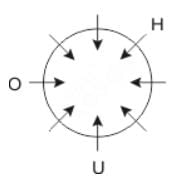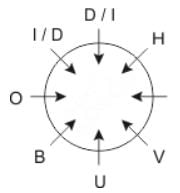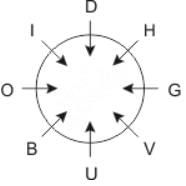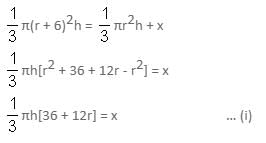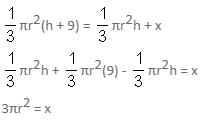DSSSB TGT Natural Science Mock Test - 9 - DSSSB TGT/PGT/PRT MCQ
30 Questions MCQ Test DSSSB TGT Mock Test Series 2025 - DSSSB TGT Natural Science Mock Test - 9
Members of the Legislative assembly (MLAs) elected by the
Gandhiji started Satyagraha in 1919 to protest against the
Who was named as the Wisden Cricketer of the Year 1980?
According to 2011 Census, the State having maximum population is–
As per Census of India, an Urban area with a population from 50,000 to 99,999 is named as –
The Name of the Laccadive, Minicoy and Amindivi Islands was changed, to Lakshadweep by an act of parliament in -
The original founder of the Manuscripts and Editor of Kautilya's Athashastra was -
With reference to National Industrial Corridor Development Corporation (NICDC) Limited, consider the following statements.
1. It has been formed by renaming Delhi Mumbai Industrial Development Corporation Limited after the expansion of its mandate.
2. Government of India and Japan Bank for International Cooperation are its shareholders.
3. Its mandate is to develop and implement all industrial corridor projects in the country.
Which of the statements given above are correct?
Where was the three-day All-India Taekwondo Championship recently inaugurated?
Which country's Prime Minister Giorgia Meloni will be the chief guest at the 8th Raisina Dialogue?
Which birth anniversary of Sant Sevalal Maharaj has been celebrated recently?
Manju is at a fixed point, from where she goes 20 metres towards West. From there she goes 10 metres towards Notrh. Then she goes 35 metres towards East and after this she goes 5 metres towards South and in the end she goes 15 metres towards West. How far is she from the fixed point?
Directions to Solve
In each of the following questions two statements are given. Which are followed by four conclusions (1), (2), (3) and (4). Choose the conclusions which logically follow from the given statements.
Question -
Statements: All men are vertebrates. Some mammals are vertebrates.
Conclusions:
- All men are mammals.
- All mammals are men.
- Some vertebrates are mammals.
- All vertebrates are men.
Directions to Solve
In each of the following questions two statements are given. Which are followed by four conclusions (1), (2), (3) and (4). Choose the conclusions which logically follow from the given statements.
Question -
Statements: All the phones are scales. All the scales are calculators.
Conclusions:
- All the calculators are scales.
- All the phones are calculators
- All the scales are phones.
- Some calculators are phones.
If P $ Q means P is the brother of Q; P # Q means P is the mother of Q; P * Q means P is the daughter of Q in A # B $ C * D, who is the father?
Directions to Solve
Five girls are sitting on a bench to be photographed. Seema is to the left of Rani and to the right of Bindu. Mary is to the right of Rani. Reeta is between Rani and Mary.
Question - Who is in the middle of the photograph?
In a certain code, the word DEAL is coded as 4 – 5 – 1 – 12. Following the same rule of coding, what should e the code for the word LADY?
Directions: Study the following information carefully and answer the question given below.
Eight people O, H, U, V, I, D, B and G are sitting around a circular table facing the centre.
O is sitting second to the left of U and third to right of H. D and I are immediate neighbors of each other and one of them is an immediate neighbor of O. V is sitting second to the right of B. G is sitting second to the left of D.
Q. Starting from B’s position, if all the eight were arranged in alphabetical order in clockwise direction the seating position of how many members (excluding B) does not change?
The following line graph gives the percent profit earned by two Companies X and Y during the period 1996 - 2001.

Percentage profit earned by Two Companies X and Y over the Given Years
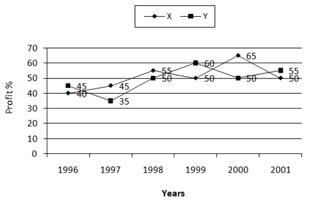
Q.
If the expenditures of Company X and Y in 1996 were equal and the total income of the two Companies in 1996 was Rs. 342 crores, what was the total profit of the two Companies together in 1996? (Profit = Income - Expenditure)
A sum of money placed at compound interest doubles itself in 3 years. In how many years will it amount to 8 times itself?
In a college all the students are made to stand in four rows. 4 rows contains 12, 8, 22, 30 students respectively. Find the least number of students in the college?
A is thrice as good a work man as B and takes 10 days less to do a piece of work than B takes. The number of days taken by B to finish the work is:
Ajit is 3 times as efficient as Bablu, then the ratio of number of days required by each to work alone, completely?
P and Q are two different mouth fresheners, prepared by mixing Supari and Saunf in the ratios 9 : 4 and 9 : 17, respectively. If equal quantities of the P and Q mouth fresheners are mixed to form a third kind of mouth freshener R, find the ratio of Saunf and Supari in R.
A and B invested the same amount of money in shares. After one month, A and B both sold their shares. A got P% loss, whereas B got P% profit. With this amount of money, they again purchased shares and sold them after one month. But this time, A got P% profit, whereas B got P% loss. Finally, who has more money?
Increasing the height of a cone by 9 units increases its volume by x cubic units. Increasing its radius by 6 units also increases its volume by x cubic units. If the original height is 3 units, then the original radius is _____.
A sealed bottle, which contains water, has been constructed by attaching a cylinder of radius 1 cm to a cylinder of radius 3 cm, as shown in Figure A. When the bottle is upright, the height of the water is 20 cm, as shown in the cross section of the bottle in Figure B. When the bottle is upside down, the height of the liquid is 28 cm, as shown in Figure C. What is the total height (in cm) of the bottle?




